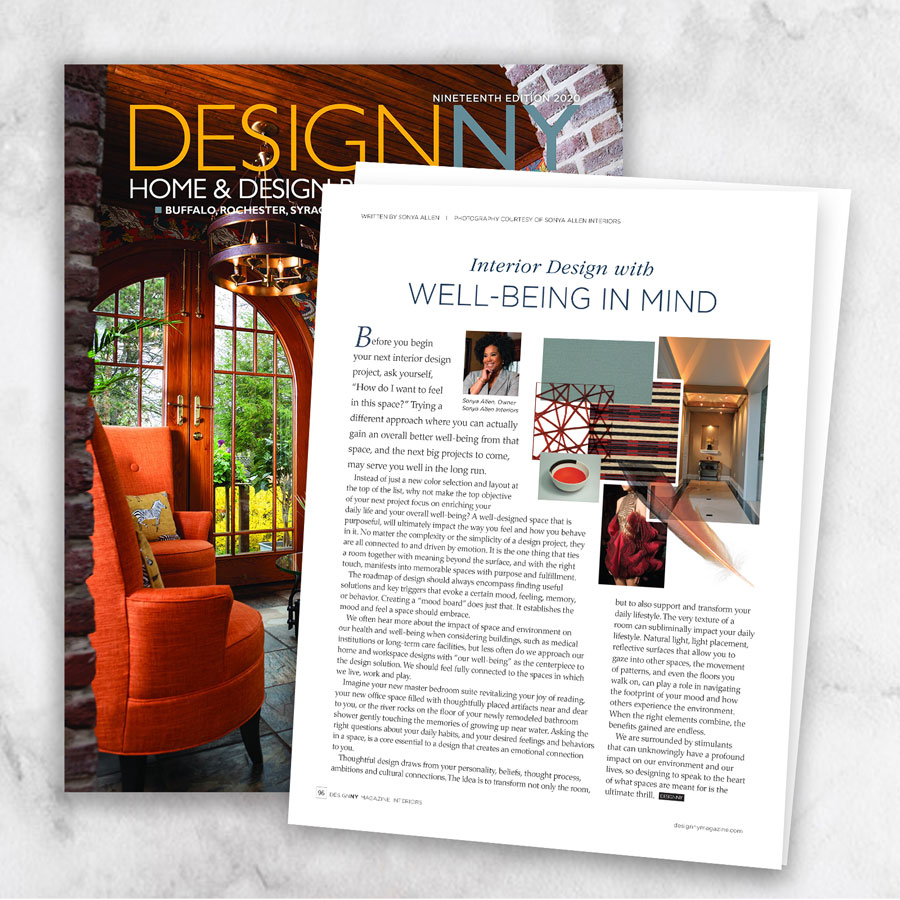Interior Design with Well-Being in Mind
Before you begin your next interior design project, ask yourself, “How do I want to feel in this space?” Trying a different approach where you can actually gain an overall better well-being from that space, and the next big projects to come, may serve you well in the long run.
Instead of just a new color selection and layout at the top of the list, why not make the top objective of your next project focus on enriching your daily life and your overall well-being? A well-designed space that is purposeful, will ultimately impact the way you feel and how you behave in it. No matter the complexity or the simplicity of a design project, they are all connected to and driven by emotion. It is the one thing that ties a room together with meaning beyond the surface, and with the right touch, manifests into memorable spaces with purpose and fulfillment.
The roadmap of design should always encompass finding useful solutions and key triggers that evoke a certain mood, feeling, memory, or behavior. Creating a “mood board” does just that. It establishes the mood and feel a space should embrace.
We often hear more about the impact of space and environment on our health and well-being when considering buildings, such as medical institutions or long-term care facilities, but less often do we approach our home and workspace designs with “our well-being” as the centerpiece to the design solution. We should feel fully connected to the spaces in which we live, work and play.
Imagine your new master bedroom suite revitalizing your joy of reading, your new office space filled with thoughtfully placed artifacts near and dear to you, or the river rocks on the floor of your newly remodeled bathroom shower gently touching the memories of growing up near water. Asking the right questions about your daily habits, and your desired feelings and behaviors in a space, is a core essential to a design that creates an emotional connection to you.
Thoughtful design draws from your personality, beliefs, thought process, ambitions and cultural connections. The idea is to transform not only the room, but to also support and transform your daily lifestyle. The very texture of a room can subliminally impact your daily lifestyle. Natural light, light placement, reflective surfaces that allow you to gaze into other spaces, the movement of patterns, and even the floors you walk on, can play a role in navigating the footprint of your mood and how others experience the environment. When the right elements combine, the benefits gained are endless.
We are surrounded by stimulants that can unknowingly have a profound impact on our environment and our lives, so designing to speak to the heart of what spaces are meant for is the ultimate thrill.

Article from DESIGN NY MAGAZINE | 2020 Edition
Author: Sonya Allen


